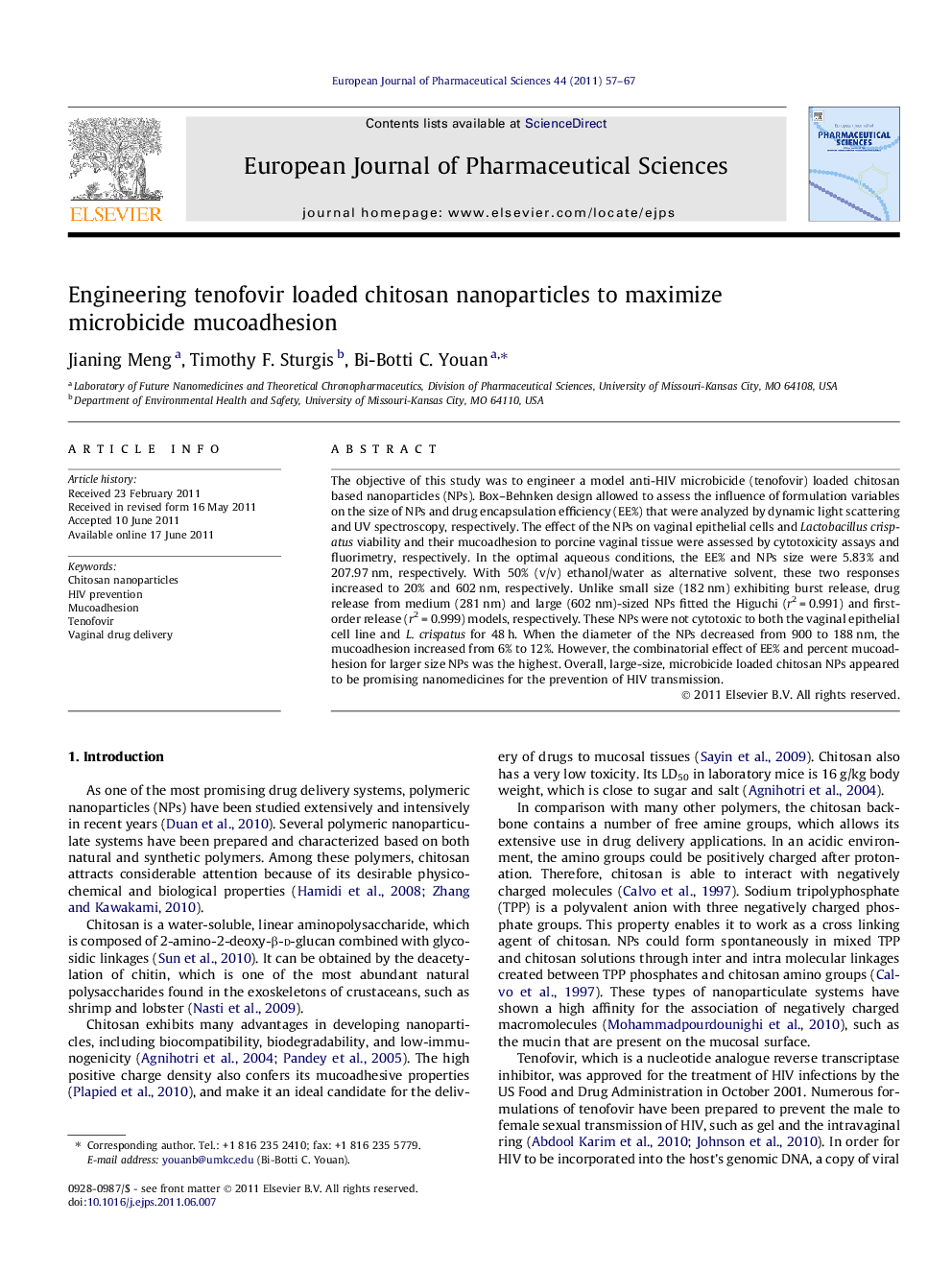| کد مقاله | کد نشریه | سال انتشار | مقاله انگلیسی | نسخه تمام متن |
|---|---|---|---|---|
| 2481552 | 1556229 | 2011 | 11 صفحه PDF | دانلود رایگان |

The objective of this study was to engineer a model anti-HIV microbicide (tenofovir) loaded chitosan based nanoparticles (NPs). Box–Behnken design allowed to assess the influence of formulation variables on the size of NPs and drug encapsulation efficiency (EE%) that were analyzed by dynamic light scattering and UV spectroscopy, respectively. The effect of the NPs on vaginal epithelial cells and Lactobacilluscrispatus viability and their mucoadhesion to porcine vaginal tissue were assessed by cytotoxicity assays and fluorimetry, respectively. In the optimal aqueous conditions, the EE% and NPs size were 5.83% and 207.97 nm, respectively. With 50% (v/v) ethanol/water as alternative solvent, these two responses increased to 20% and 602 nm, respectively. Unlike small size (182 nm) exhibiting burst release, drug release from medium (281 nm) and large (602 nm)-sized NPs fitted the Higuchi (r2 = 0.991) and first-order release (r2 = 0.999) models, respectively. These NPs were not cytotoxic to both the vaginal epithelial cell line and L. crispatus for 48 h. When the diameter of the NPs decreased from 900 to 188 nm, the mucoadhesion increased from 6% to 12%. However, the combinatorial effect of EE% and percent mucoadhesion for larger size NPs was the highest. Overall, large-size, microbicide loaded chitosan NPs appeared to be promising nanomedicines for the prevention of HIV transmission.
In vitro release profiles of tenofovir (an HIV microbicide) from chitosan NPs with small (182 nm), medium (281 nm) and large size (602 nm) (n = 3). Percent mucoadhesion of chitosan particles with different sizes on porcine vaginal tissue. After fluorescence labeling, the mean diameters of small, medium, and large particles were 188, 273.5, and 900.2 nm, respectively (n = 3).Figure optionsDownload as PowerPoint slide
Journal: European Journal of Pharmaceutical Sciences - Volume 44, Issues 1–2, 18 September 2011, Pages 57–67